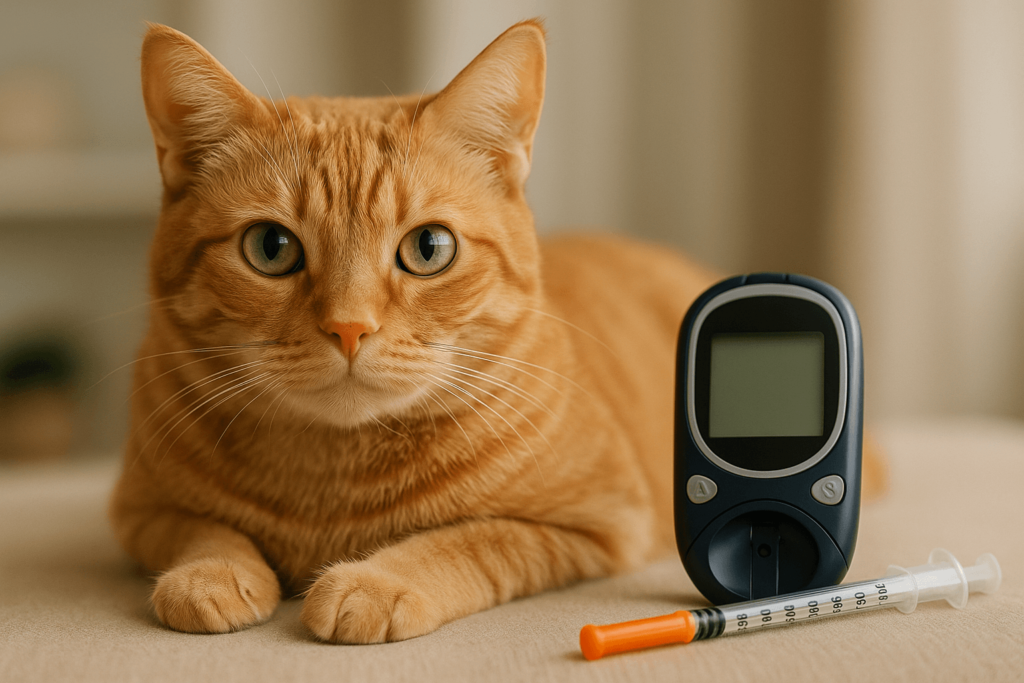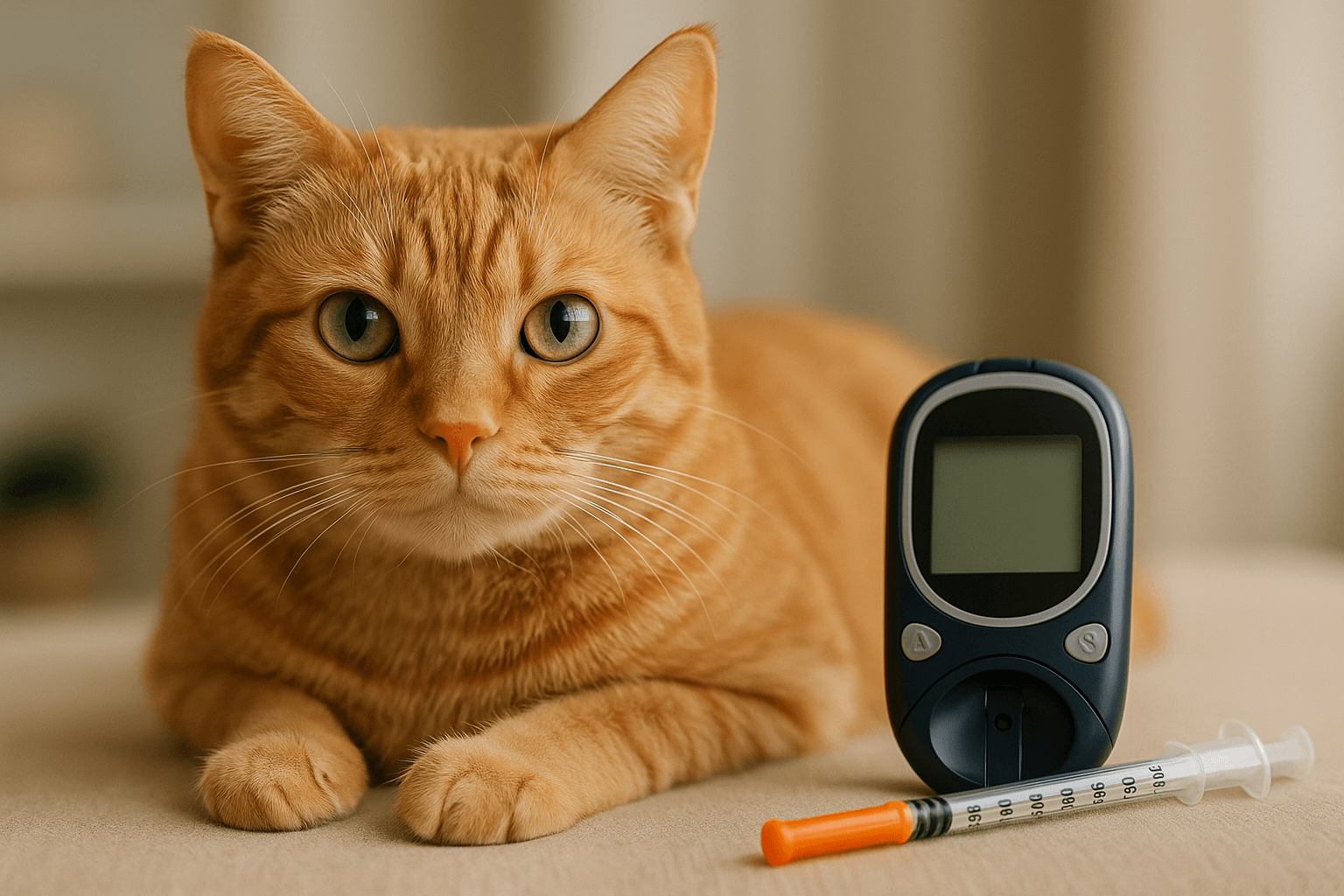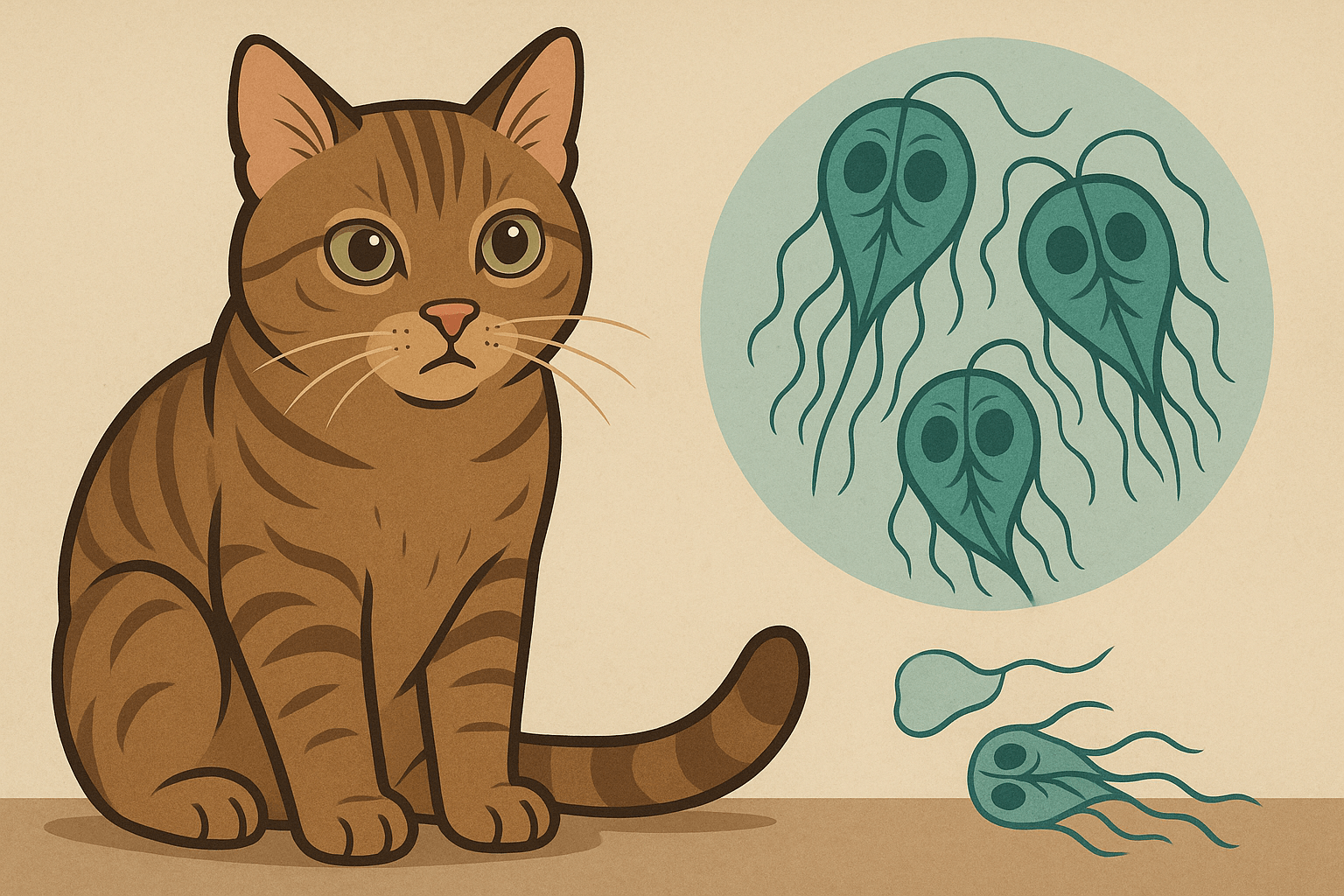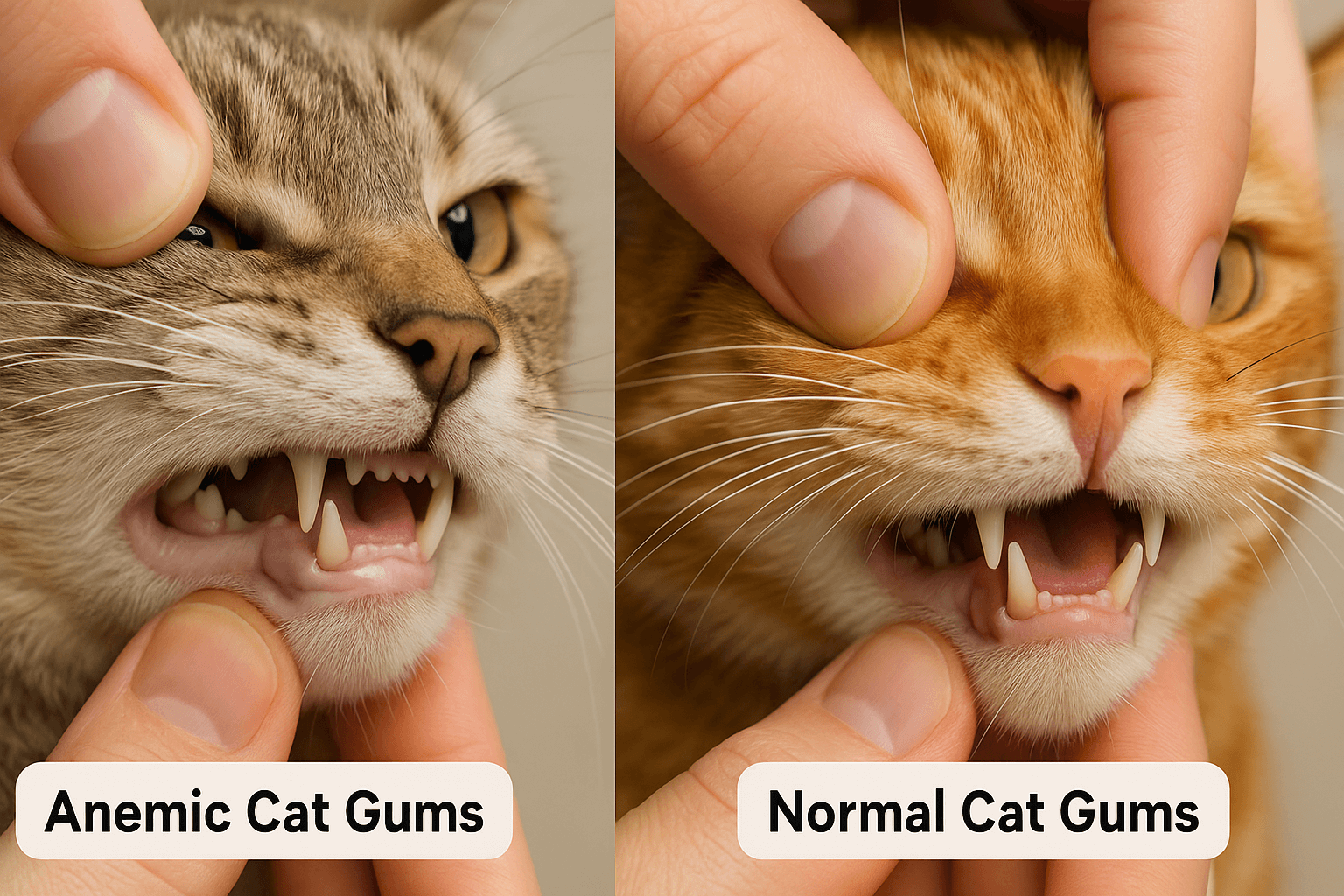Understanding Diabetes in Cats
Diabetes in cats is a growing concern among pet owners, as this chronic condition can significantly impact a feline’s quality of life if left untreated. Similar to humans, cats can develop diabetes when their bodies struggle to regulate blood sugar levels due to insufficient insulin production or resistance to insulin. While it may sound daunting, early detection and proper management can help your cat live a happy, healthy life. This blog post explores the causes, symptoms, treatment options, and preventive measures for feline diabetes, empowering you to provide the best care for your furry companion.
Signs and Symptoms of Diabetes in Cats
Recognizing the early signs of diabetes is crucial for timely intervention. Understanding these symptoms can help you identify potential issues and seek veterinary care promptly.
Increased Thirst (Polydipsia):
Cats with diabetes often drink excessive amounts of water as their bodies attempt to flush out excess glucose.Frequent Urination (Polyuria):
Alongside increased thirst, diabetic cats urinate more frequently, which can lead to accidents outside the litter box.Weight Loss Despite Increased Appetite:
Even though diabetic cats may eat more than usual, they often lose weight due to the body’s inability to use glucose effectively.Lethargy and Weakness:
A lack of energy or reluctance to engage in normal activities can indicate an underlying health issue like diabetes.Poor Coat Condition:
Diabetic cats may develop a dull, unkempt coat as their bodies struggle to maintain overall health.
If you notice any of these symptoms, consult your veterinarian immediately. Early diagnosis and treatment can make a significant difference in managing feline diabetes.

Causes and Risk Factors for Feline Diabetes
While the exact cause of diabetes in cats isn’t always clear, several factors increase the likelihood of its development. Understanding these risks can help you take preventive measures to protect your cat.
Obesity:
Excess body weight is one of the leading risk factors for diabetes, as it contributes to insulin resistance.Age:
Older cats, particularly those over the age of 7, are more prone to developing diabetes due to age-related changes in metabolism.Genetics:
Certain breeds, such as Burmese cats, may have a higher predisposition to diabetes.Inactivity:
A sedentary lifestyle can lead to weight gain and metabolic imbalances, increasing the risk of diabetes.Chronic Health Conditions:
Conditions like pancreatitis or hyperthyroidism can impair insulin production or function, contributing to diabetes.
By addressing these risk factors through diet, exercise, and regular vet check-ups, you can reduce the chances of your cat developing diabetes.
Check this guide 👉Understanding Cat Blood Sugar Levels: Best 7 Expert Tips!
Check this guide 👉What is Dangerously High Blood Sugar for a Cat? Best 7 Tips!
Check this guide 👉Low Red Blood Cell Count in Cats: Best 7 Expert Tips!
Preventive Measures for Diabetes | Treatment Options for Diabetic Cats |
|---|---|
Maintain a healthy weight | Insulin injections as prescribed by vets |
Provide a balanced, low-carb diet | Regular blood glucose monitoring |
Encourage daily physical activity | Veterinary-approved oral medications |
Schedule routine vet visits | Dietary adjustments tailored to the cat |
Avoid overfeeding and unhealthy treats | Stress reduction techniques at home |
Managing Diabetes Through Diet and Nutrition
Proper nutrition plays a vital role in managing diabetes in cats. A well-balanced diet can help regulate blood sugar levels and improve overall health.
Focus on High-Protein, Low-Carb Foods:
Cats are obligate carnivores, meaning they thrive on protein-rich diets that minimize carbohydrate intake.Avoid Dry Kibble High in Carbs:
Many commercial dry foods contain high levels of carbohydrates, which can spike blood sugar levels. Opt for wet food instead.Feed Consistent Portions:
Providing measured meals at regular intervals helps maintain stable glucose levels throughout the day.Limit Treats and Snacks:
While occasional treats are fine, excessive snacking can disrupt blood sugar control. Choose diabetic-friendly options when possible.Consult Your Vet for Customized Plans:
Every cat is unique, so work with your veterinarian to create a personalized nutrition plan that meets your cat’s specific needs.
A thoughtful approach to diet can greatly enhance your cat’s ability to manage diabetes successfully.
The Importance of Regular Monitoring and Veterinary Care
Ongoing monitoring and professional guidance are essential components of managing diabetes in cats. Staying proactive ensures your cat remains healthy and comfortable.
Schedule Routine Check-Ups:
Regular vet visits allow for early detection of complications and adjustments to treatment plans as needed.Monitor Blood Glucose Levels at Home:
Using a glucometer designed for pets, you can track your cat’s blood sugar levels between vet appointments.Watch for Changes in Behavior:
Subtle shifts in appetite, activity, or litter box habits can signal fluctuations in glucose levels or other health concerns.Administer Medications as Directed:
Consistency is key when giving insulin or other medications. Follow your vet’s instructions carefully to avoid complications.Seek Immediate Help for Hypoglycemia:
If your cat shows signs of low blood sugar, such as weakness or seizures, contact your vet right away for emergency care.
With diligent monitoring and veterinary support, you can ensure your cat enjoys a fulfilling life despite their diagnosis.
Common Misconceptions About Feline Diabetes
Many myths surround feline diabetes, leading to confusion among pet owners. Clearing up these misconceptions can help you make informed decisions about your cat’s health.
Myth: Only Overweight Cats Get Diabetes:
While obesity increases the risk, even lean cats can develop diabetes due to genetic or hormonal factors.Myth: Diabetic Cats Can’t Live Long Lives:
With proper care, many diabetic cats enjoy years of good health and happiness.Myth: Insulin Injections Are Painful for Cats:
Modern insulin needles are thin and cause minimal discomfort, making injections easy to administer.Myth: Wet Food Alone Prevents Diabetes:
While wet food is beneficial, a holistic approach involving diet, exercise, and vet care is necessary for prevention.Myth: All Diabetic Cats Require Insulin:
Some cats respond well to dietary changes alone, though most will eventually need insulin therapy.
Understanding the truth behind these myths empowers you to provide better care for your cat.
Tips for Administering Insulin Safely
Giving insulin injections can feel intimidating, but with practice, it becomes a routine part of caring for your diabetic cat. These tips ensure a smooth and stress-free process.
Choose a Quiet Spot:
Administer injections in a calm environment where your cat feels safe and relaxed.Use Positive Reinforcement:
Reward your cat with treats or affection after each injection to create positive associations.Rotate Injection Sites:
Alternate between different areas of your cat’s body to prevent soreness or irritation.Handle Your Cat Gently:
Approach the process calmly and avoid restraining your cat too tightly to minimize stress.Double-Check Dosage Instructions:
Always confirm the correct insulin dose with your vet to avoid accidental overdoses or underdoses.
With patience and care, administering insulin can become a seamless part of your daily routine.
How to Support a Recently Diagnosed Cat
Receiving a diabetes diagnosis for your cat can be overwhelming, but taking immediate action sets the stage for successful management. These steps guide you through the initial phase.
Educate Yourself About Diabetes:
Learn as much as you can about the condition to feel confident in managing your cat’s care.Create a Structured Routine:
Establish consistent feeding, medication, and monitoring schedules to stabilize your cat’s glucose levels.Make Necessary Lifestyle Changes:
Adjust your cat’s diet, encourage exercise, and remove potential stressors from their environment.Stay Calm and Patient:
Your cat senses your emotions—remaining calm reassures them during this transition period.Build a Strong Relationship with Your Vet:
Regular communication with your veterinarian ensures you have access to expert advice whenever needed.
By focusing on these priorities, you can set a solid foundation for managing your cat’s diabetes journey.
Frequently Asked Questions About Diabetes in Cats
Can diabetes in cats be cured?
While type 2 diabetes can sometimes go into remission with proper care, most cases require lifelong management.
How do I know if my cat has diabetes?
Look for symptoms like increased thirst, frequent urination, weight loss, and lethargy, and consult your vet for testing.
What should I feed my diabetic cat?
Focus on high-protein, low-carbohydrate wet food and avoid snacks high in sugar or carbs.
Is insulin therapy safe for cats?
Yes, insulin therapy is a common and effective treatment when administered correctly under veterinary supervision.
Can indoor cats develop diabetes?
Yes, indoor cats are at risk, especially if they’re overweight or inactive. Maintaining a healthy lifestyle reduces this risk.
Empowering Your Cat’s Journey with Diabetes
Diabetes in cats may seem overwhelming at first, but with knowledge, dedication, and veterinary support, it’s entirely manageable. By understanding the signs, addressing risk factors, and implementing a comprehensive care plan, you can give your cat the tools they need to thrive. Remember, your love and commitment make all the difference in helping your feline friend live a long, happy, and healthy life—even with diabetes.
Giardia in Cats: Best 7 Expert Tips! Discover expert advice on identifying, treating, and preventing giardia in cats to ensure your feline stays happy and healthy.
Cat Hyperventilating: Best 7 Expert Tips! Discover signs, causes, and solutions for cat hyperventilation. Learn how to calm your cat and when to seek veterinary care for their breathing issues.
Anemic Cat Gums vs Normal: Best 7 Expert Tips! Learn to spot signs of anemia in cats, understand gum health, and ensure your feline stays happy and healthy with expert advice.
Himalayan Cat Size: Best 7 Expert Tips! Discover expert advice on Himalayan cat size, growth factors, care tips, and how to ensure your feline stays healthy and happy.





